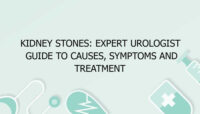Blisters are small pockets of fluid that form between the layers of skin, typically in response to friction, heat, or an infection. These fluid-filled sacs can be painful, especially when they are located in high-pressure areas such as the feet, hands, or fingers. Blisters can appear on almost any part of the body and vary in size and severity. In this comprehensive guide, we will explore the causes, symptoms, types, and treatments for blisters, as well as frequently asked questions and a selection of relevant medical journals on the subject.
What Are Blisters?
A blister is a raised area of skin filled with a clear fluid, typically caused by damage to the skin from friction, burns, or infections. The fluid inside a blister is usually serum, a component of blood, but in some cases, it may also contain blood or pus, depending on the underlying cause of the blister. The primary function of a blister is to protect the damaged skin beneath it while it heals, serving as a cushion that reduces further irritation.
Blisters can form from various conditions and can occur on any part of the body. For example, blisters on the feet are commonly caused by repetitive friction from shoes, while blisters on the hands may be caused by manual labor or exposure to heat. Understanding the causes, symptoms, and types of blisters can help individuals take appropriate steps for treatment and prevention.
Causes of Blisters
Blisters can be triggered by a variety of factors, including mechanical damage, thermal exposure, chemical irritants, or infections. Here are some of the most common causes of blisters:
- Friction: One of the most common causes of blisters is friction, especially from ill-fitting shoes, tight clothing, or repeated rubbing against a surface. For example, new shoes that haven’t been broken in may cause blisters on the feet, while tools that cause continuous rubbing on the skin can result in blisters on the hands.
- Burns: Thermal burns, whether from heat or chemicals, can cause blisters to form. First-degree and second-degree burns can result in small blisters, which act as a protective barrier to prevent infection and further damage to the underlying skin. Sunburn is also a common cause of blisters, particularly in individuals who spend prolonged periods in the sun without protection.
- Infections: Bacterial, viral, and fungal infections can cause blisters. For example, herpes simplex virus (HSV), which causes cold sores, can also lead to blisters around the mouth and genital areas. Infections like impetigo and chickenpox are other examples of conditions that may lead to blister formation.
- Allergic Reactions: Certain allergic reactions, such as poison ivy, poison oak, or certain drugs, may result in blisters. These rashes often cause inflammation and blistering as part of the immune response to the allergen.
- Skin Conditions: Some skin conditions, such as eczema, contact dermatitis, and pemphigus vulgaris, can result in blister formation. These conditions may cause the skin to become inflamed and develop blisters as part of the body’s response.
- Frostbite: Prolonged exposure to extreme cold can cause frostbite, which damages the skin and underlying tissue. As part of the healing process, blisters can form to protect the damaged area.
Symptoms of Blisters
The symptoms of blisters can vary depending on their cause, but some common signs include:
- Raised, fluid-filled bump: The most obvious symptom of a blister is the appearance of a raised, fluid-filled area on the skin.
- Pain and tenderness: Blisters are often painful, especially when pressure is applied to the area. This is particularly true if the blister is located on the feet or hands, where constant movement or friction can aggravate the pain.
- Redness and inflammation: The area surrounding the blister may become red and inflamed, especially if the blister was caused by an infection or a burn.
- Itching: Some blisters, especially those caused by allergic reactions or infections, may itch intensely as the skin heals.
- Drainage: In some cases, blisters may burst, and the fluid inside can drain out. This fluid is typically clear, but if the blister becomes infected, it may contain pus or blood.
Types of Blisters
Blisters can be classified into several types based on their appearance, cause, and location on the body. Below are some common types:
- Friction Blisters: These are the most common type of blisters and occur due to friction between the skin and an external object, such as shoes or tools. Friction blisters are often seen on the feet, hands, and fingers.
- Burn Blisters: These blisters are caused by exposure to heat, chemicals, or radiation. They are often associated with sunburn, burns from hot surfaces, or chemical burns. Burn blisters may appear red and swollen.
- Infected Blisters: These blisters can be caused by bacterial, viral, or fungal infections. For example, chickenpox, impetigo, and herpes simplex virus can cause blistering as part of the infection. Infected blisters may be accompanied by other symptoms like fever, redness, or pus.
- Blood Blisters: These blisters occur when small blood vessels under the skin are damaged, typically due to blunt force trauma. Instead of clear fluid, blood blisters contain blood and may appear darker in color.
- Cold Sores: Caused by the herpes simplex virus, cold sores often form in clusters around the lips or mouth. These blisters are highly contagious and can spread to other areas of the body through direct contact or contaminated objects.
- Chemical Blisters: Exposure to harsh chemicals, such as cleaning products, can cause blistering. These blisters often result from contact dermatitis, which leads to skin inflammation and blister formation.
- Eczema-Related Blisters: People with eczema or atopic dermatitis may experience blisters as part of an allergic reaction or flare-up. These blisters can be itchy and may leak fluid if scratched.
- Venomous Blisters: Certain insect stings or bites, such as those from fire ants or bees, can lead to the formation of blisters at the site of the sting. These blisters are often filled with clear fluid and can be quite painful.
Treatment of Blisters
While many blisters resolve on their own without the need for medical intervention, there are several ways to treat them to reduce pain, prevent infection, and speed up the healing process.
1. Avoid Popping the Blister
It is generally recommended not to pop a blister, as the fluid inside helps protect the underlying skin and prevents infection. If the blister remains intact, it will typically heal faster. However, if the blister is particularly large or painful, and you are at risk of it rupturing on its own, it may be beneficial to drain it carefully with sterile equipment.
2. Use a Bandage or Dressing
Covering the blister with a sterile bandage or dressing can help protect it from friction and prevent infection. If the blister has already burst, use a non-stick bandage and apply an antibiotic ointment to prevent bacteria from entering the wound.
3. Clean the Area
If the blister breaks, it is important to clean the area gently with soap and water. You can apply an antiseptic ointment to prevent infection, followed by a bandage to keep the area covered.
4. Pain Management
If the blister is painful, over-the-counter pain relievers such as ibuprofen or acetaminophen can help alleviate discomfort. Topical numbing agents like lidocaine or benzocaine can also be applied to reduce pain and itching.
5. Cold Compresses
For blisters caused by burns or inflammation, applying a cold compress can help reduce pain and swelling. Avoid placing ice directly on the blister; instead, wrap it in a clean cloth before applying it to the skin.
6. Antibiotic Ointments
For blisters that have been caused by friction or that have burst and are at risk of infection, applying a topical antibiotic ointment (e.g., Neosporin) can help protect the wound from infection. Always clean the area before applying the ointment.
7. Medical Treatment
In severe cases or when infection is suspected, it may be necessary to seek medical attention. A healthcare provider may drain the blister professionally, prescribe oral antibiotics for an infection, or provide other treatments depending on the underlying cause.
Table: Key Facts about Blisters
| Aspect | Details |
|---|---|
| Cause | Friction, burns, infections, allergic reactions, skin conditions, frostbite |
| Common Locations | Feet, hands, fingers, mouth, genital area, and anywhere friction or injury occurs |
| Symptoms | Pain, tenderness, redness, inflammation, fluid-filled bump, itching, or drainage of fluid |
| Treatment | Bandaging, antiseptic creams, pain relievers, cold compress, avoiding friction, antibiotics if infected |
| Prevention | Proper footwear, protection from burns, avoiding allergens, using protective gloves or tools |
10 FAQs About Blisters
What causes blisters to form on the skin?
Blisters are typically caused by friction, burns, infections, or allergic reactions. Friction blisters are the most common, occurring when repetitive rubbing or pressure is applied to the skin, such as from new shoes
or manual labor. Burn blisters form as a result of heat or chemical burns, and infections like herpes simplex virus or impetigo can also cause blistering. Allergic reactions to substances like poison ivy or certain medications may also result in blisters. Additionally, certain skin conditions, such as eczema or contact dermatitis, can lead to blister formation. Identifying the cause of a blister is crucial to determine the appropriate treatment.
How can I prevent blisters from forming on my feet?
To prevent blisters on the feet, it is essential to wear properly fitting shoes that are neither too tight nor too loose. Shoes that cause friction against the skin should be avoided, and socks made of breathable fabrics can help reduce moisture and friction. Applying blister prevention tape or padding in areas that are prone to rubbing can also help reduce the risk of blister formation. Additionally, moisturizing the feet and keeping them clean can prevent excessive dryness or irritation, which may contribute to blister formation.
Can blisters heal on their own?
In many cases, blisters can heal on their own without the need for medical intervention. The fluid inside the blister helps protect the damaged skin and promotes healing. If the blister remains intact, it will naturally begin to heal as the skin underneath regenerates. However, if the blister bursts, it is important to clean the area and apply an antibiotic ointment to prevent infection. Popping the blister is not recommended unless necessary, as the fluid inside helps shield the underlying skin from further damage.
What should I do if a blister bursts?
If a blister bursts, it is essential to clean the area gently with soap and water to prevent infection. Apply an antiseptic or antibiotic ointment, and cover the wound with a sterile, non-stick bandage. If the blister is large or painful, consider using a blister pad or dressing to protect the area from further irritation. Keep the area clean and dry, and avoid excessive friction to prevent further damage.
Are blisters contagious?
Blisters themselves are not contagious, but the underlying conditions that cause them can be. For example, if the blister is caused by a viral infection like herpes simplex virus (cold sores), the virus can be spread through direct contact with the fluid or an open wound. Similarly, if the blister is due to a bacterial infection like impetigo, it can be contagious. To reduce the risk of spreading infections, avoid touching the blister and wash your hands frequently.
How can I treat blisters caused by sunburn?
Blisters caused by sunburn can be treated by applying aloe vera gel or over-the-counter hydrocortisone cream to the affected area. A cold compress can also help relieve pain and reduce swelling. To prevent further damage, avoid exposing the affected area to the sun until it heals. If the blisters are large or painful, consider seeking medical attention to prevent infection and ensure proper treatment.
When should I see a doctor about a blister?
Most blisters can be treated at home with simple care. However, you should see a doctor if the blister becomes infected, shows signs of pus, or causes significant pain or discomfort. Additionally, if you have a large blister that does not heal, or if blisters are part of a larger systemic illness (like chickenpox), it’s important to seek medical attention. People with compromised immune systems or diabetes should also seek professional care for blisters, as they may be more prone to complications.
Can blisters be prevented from forming from friction?
Yes, friction blisters can be prevented by wearing the right footwear and using protective barriers like blister pads, bandages, or friction-reducing creams. Ensuring that shoes fit properly, are broken in gradually, and using moisture-wicking socks can reduce the chances of friction blisters forming. If you are performing activities that are likely to cause friction, such as hiking or running, it’s a good idea to apply blister prevention tape to vulnerable areas of the skin.
Are there any home remedies for treating blisters?
Home remedies for treating blisters include using aloe vera, honey, and cold compresses. Aloe vera has soothing properties that can reduce inflammation and promote healing. Honey has natural antibacterial properties that can help prevent infection in open blisters. Cold compresses can be used to relieve pain and reduce swelling. It’s important to keep the area clean and avoid further irritation to allow the blister to heal quickly.
What is the best way to treat blood blisters?
Blood blisters should be treated similarly to regular blisters, with extra caution to avoid rupturing the blister. Apply a clean bandage or dressing to protect the blood blister and prevent further trauma. If the blister causes significant pain, over-the-counter pain relievers such as ibuprofen or acetaminophen can be used to manage discomfort. If the blood blister becomes infected or is very large, medical attention should be sought for professional draining and treatment.
10 Medical Journals on Blisters: Titles and Descriptions
| Journal Title | Description |
|---|---|
| The Journal of Dermatology | Focuses on clinical and research studies on various dermatological conditions, including blistering disorders. |
| Burns: Journal of the International Society for Burn Injuries | Includes research on burn injuries, burn care, and related blistering disorders. |
| Journal of Infection and Chemotherapy | Discusses infections that cause blistering, such as impetigo and herpes simplex virus infections. |
| The Lancet Infectious Diseases | A medical journal that publishes cutting-edge research on infectious diseases, including viral blisters. |
| Journal of the American Academy of Dermatology | Covers all aspects of dermatology, including skin conditions that cause blistering, such as pemphigus vulgaris. |
| Clinical Infectious Diseases | A peer-reviewed journal that focuses on the diagnosis and treatment of infectious diseases, including viral blisters. |
| Archives of Dermatology | Offers comprehensive articles on skin diseases and their management, including blisters caused by skin conditions. |
| International Journal of Dermatology | An international journal that provides clinical insights on a range of dermatological diseases, including blistering conditions. |
| Journal of Cutaneous Medicine and Surgery | Focuses on advances in the field of cutaneous medicine, including blisters caused by burns, trauma, and infection. |
| Journal of Pediatric Dermatology | A specialty journal focusing on skin conditions in children, including blistering skin disorders like chickenpox. |


